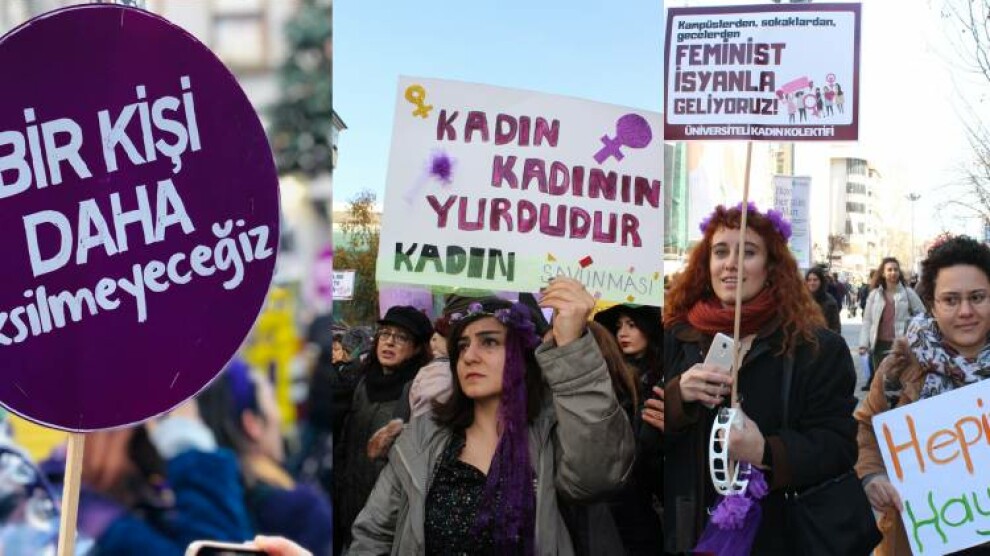Not Homicide but Femicide

We can say that the use of the term of femicide in videos and posts on social media platforms leads people to hear this term. Women's Platform for Equality (Eşitlik İçin Kadın Platformu-EŞİK) launched a campaign against femicide and called on the Parliament to perform its duties to prevent violence against women and femicide. EŞİK defined the killing of at least three women in a day as femicide or extermination of women and called on all women to support the campaign. Well, what is femicide? When was it used first? In this news series, we will talk about the definition of femicide when was it first used by whom? In the second part of the news series, we will try to explain the political, cultural, social, and ideological factors that lead to femicide. In the third part, we will try to write the reactions of women’s organizations, their solution recommendations to end femicide, conventions, and the demands of women in Turkey.
EKİM ZEYNEP YAĞMUR
Ankara- Women are killed all around the world every day just for being women. In some countries, girls are at risk of being killed intentionally. Women are trying to survive not to live amid a network of relationships messing with their clothes, smiles on the streets, at workplaces, or at homes. Wearing suits for the perpetrators during hearings is considered good behavior for a sentence reduction. But when women are killed and subjected to violence “for” wearing colorful clothes, doing make-up, returning home an hour late, their clothes are considered provocative. It is questioned what the woman faced violence did, what she said, or how she dressed. The discussing thing is whether women who have been subjected to physical, verbal, and sexual violence deserve it or not; the criminals are declared "victims". Violence, religious-traditional bias, gendered-discriminatory policies are legitimized by laws.
The elimination of violence against women will be possible when the states and ruling parties take responsibility and realize social policies with the cooperation of all NGOs and official organizations. Women's Platform for Equality (Eşitlik İçin Kadın Platformu-EŞİK) launched a campaign against femicide and called on the Parliament to perform its duties to prevent violence against women and femicide. Well, what does “femicide” mean?
Femicide or feminicide is defined as “the intentional killing of women or girls because they are female” and it is a sex-based hate crime term. Feminist author Diana E. H. Russell was known as the first person to define and disseminate this term in modern times, in 1976. But author Carol Orlock used the term in her unpublished anthology on femicide in 1975.
Feminist author Diana E. H. Russell defines the word as “the killing of females by males because they are female.” The term femicide was publicly introduced by Diana Russell while testifying about murders of women at the International Tribunal on Crimes Against Women in Brussels in 1976. The term of femicide started to be used due to the rate of killed women in Latin America, particularly in Guatemala and Mexico started in 1990 and increased in the 2000s, and keeps increasing today. Shortly, femicide is defined as “the intentional killing of women or girls because they are female”.
Social and political reasons
Some feminists and human rights advocates think that the term of femicide is insufficient to name the increasing killing of women as a series of murders, and argue that the attacks against women have social and political reasons therefore the reality of gendered society should not be ignored in order to stop the femicide.
The ideological basis of femicide
The term “femicide,” first invented in 1801 to signify the killing of a woman, was retrieved, two centuries after to symbolize a gender-based murder and to specifically convey the murder of a woman by a man for the reason of hate, disdain, passion, or sense of ownership over women. Diana Russell introduced the term while testifying about murders of women at the International Tribunal on Crimes Against Women in Brussels in 1976. The definition of the term femicide revealed that violence against women is not personal but political. The main reason why this debate becomes intense in this century is the deepening and widespread use of the exploitation mechanisms against women by the capitalist system built on the patriarchal system. The historical, sociological definition of this policy will enable us to understand the system that constantly subjects women to violence and violence. Mechanisms giving men the right to kill women, legitimizing violence, considering women guilty form the basis for the continuity of violence.
The Vienna Declaration on Femicide in 2012 defined femicide as follows;
1) The murder of women as a result of intimate partner violence
2) The torture and misogynist slaying of women
3) Killing of women and girls in the name of “honor”
4) Targeted killing of women and girls in the context of armed conflict
5) dowry-related killings of women
6) Killing of women and girls because of their sexual orientation and gender identity
7) The killing of aboriginal and indigenous women and girls because of their gender
8) Female infanticide and gender-based sex selection foeticide
9) Genital mutilation related femicide;
10) Accusations of witchcraft
11) Other femicides connected with gangs, organized crime, drug dealers, human trafficking, and the proliferation of small arms.
Tomorrow: Femicide, a systematical and conscious state policy
